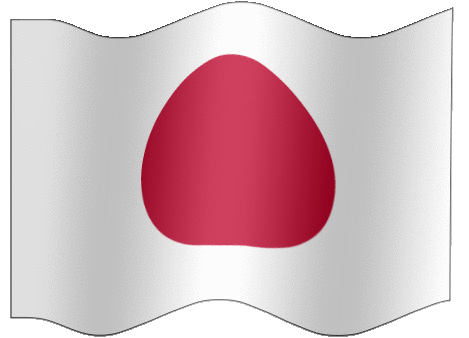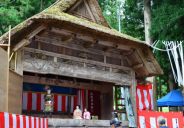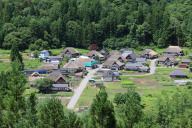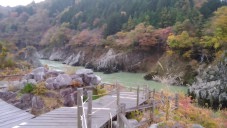 |
 |
 |
Let's be more moved - turn a trip of sights into a trip of feeling!

|
|
|
  |
  |
| Free estimates Free travel consultation |

|
 |
 |
  |
|
|
|
|
|
|
| #07A101 |
|
|
|
|
|
| TSURUGAJO CASTLE |
a symbol of SAMURAI city built in 1384 |
|
|

The recommended period for cherry blossom viewing is usually around April.
 |
 |
Aizu.Wakamatsu C.
 |
|
|
|
|
|
|
| #07A201 |
|
|
|
|
|
| TAKASE no TAIBOKU |
a large Zelkova tree that is about 500 years old |
|
|
|

This is the site where a castle was planned to be built about 500 years ago. |
 |
Aizu.Wakamatsu C.
 |
|
|
|
|
|
|
| #07A102 |
|
|
|
|
|
| ISHIBE ZAKURA |
Cherry Blossoms in ISHIBE |
|
|

A magnificent cherry tree made up of 10 trunks.
The recommended period for cherry blossom viewing is usually around April. |
 |
Aizu.Wakamatsu C.
 |
|
|
|
|
|
|
| #07A301 |
|
|
|
|
|
| MOTTAINAI AIZU |
an opinion leader in the SDGs era (MOTTAINAI means "too good too waste") |
|
|

The organization remakes old clothes into dresses, accessories, bags, and
other items and sells them at its Charity shop, and also holds fashion
shows with the production staff acting as models.
TEL: +81 (0)90 2790 0393 |
 |
Aizu.Wakamatsu C.
 |
|
|
|
|
|
|
| #07A302 |
|
|
|
|
|
| Foot Bath at HIGASHIYAMA Hot Spring |
a public foot bath at a hot springs resort opened 1300 years ago |
|
|

This foot bath is free of charge to use |
 |
Aizu.Wakamatsu C.
 |
|
|
|
|
|
|
| #07A202 |
|
|
|
|
|
| Ghost Footprint |
Footprint left on the Katsura floor |
|
|
|

It is said that ghost footprint can still be found on the floorboards of
the main hall of Dairyu-ji Temple, which was founded about 400 years ago.
Yae Niijima, the wife of Jo Niijima, the founder of Doshisha University
in Kyoto, built the graves of her ancestors at this temple. |
 |
Aizu.Wakamatsu C.
 |
|
|
|
|
|
|
| #07A501 |
|
|
|
|
|
| Lacquer item made in AIZU |
"SHIKKI" is traditional crafts from the AIZU |
|
|
|

For over 500 years, Aizu has been a major lacquerware production area, handling everything from lacquer tree cultivation to decoration. It temporarily declined during the Aizu War, but has now regained its vitality as one of Japan's leading lacquerware production areas. |
 |
Aizu.Wakamatsu C.
 |
|
|
|
|
|
|
| #07A401 |
|
|
|
|
|
| Tofu Mochi |
Rice cake made from Tofu (local dish passed down in some areas of Aizu) |
|
|

A dish made by mixing mashed tofu with soy sauce and dashi stock.
Nowadays, there is a restaurant in Aizu-Wakamatsu that specializes in this
dish. |
 |
Aizu.Wakamatsu C.
 |
|
|
|
|
|
|
| #07A104 |
|
|
|
|
|
| Mt. IIMORI |
a mountain with sad story |
|
|
|

The summit is well known as the place where 19 young soldiers, known as the Byakkotai, committed suicide during the Aizu War. There are two ways to get to the summit: on foot or by taking the paid escalator (cheap). |
 |
Aizu.Wakamatsu C.
 |
|
|
|
|
|
|
| #07B201 |
|
|
|
|
|
| NAGATOKO |
Thatched roof worship hall with long floor |
|
|

This is an ancient shrine that was established in 1055. The worship hall,
Nagatoko, is a building in the style of the Shinden-zukuri style (the ancient
bedroom style) of the Heian period, with 44 cylinders, each 1 shaku 5 sun
(about 45 centimeters) in diameter, arranged at equal intervals in five
rows, and the entire building is open to the public. The adjacent Kumano
Shrine Treasure Hall (for a fee) houses many national and prefectural cultural
properties, including copper bowls, which can be viewed. In front of the
Nagatoko stands a large ginkgo tree that is said to be 800 years old, and
in late autumn, its fallen leaves beautifully color the grounds like a
yellow carpet. During the peak viewing period from mid- to late November,
the tree is lit up, creating a fantastic atmosphere. |
 |
Kitakata C.
 |
|
|
|
|
|
|
| #07B101 |
|
|
|
|
|
| Cherry blossom trees at NICHU Line |
weeping cherry tree lined street |
|
|
|

The Nichu Line Weeping Cherry Tree Line was developed as a promenade on part of the site of the JR Train Nicchu Line, which was closed in 1984.
Approximately 1,000 weeping cherry trees are planted along a 3-kilometer
stretch from north to south! Within the avenue, you can also see a steam
locomotive that ran there at the time, as well as the so-called "cherry
blossom tunnel" where cherry blossoms seem to be falling from both
sides of the road, making it a great photo spot. The Kitakata Cherry Blossom
Festival is held every year in April when the cherry blossoms are in bloom. |
 |
Kitakata C.
 |
|
|
|
|
|
|
| #07B401 |
|
|
|
|
|
| RAMEN City |
one of the three great ramen in Japan |
|
|
|

Kitakata Ramen is counted as one of the three great ramen in Japan, along
with Sapporo ramen and Hakata ramen. The soup is a clear pork bone broth
flavored with soy sauce, and has a light taste. Many restaurants serve
the traditional type of ramen. The noodles are thick, called "flat,
matured, high-hydration noodles," and have a unique curl and soft
texture. Kitakata City Hall has set up a Kitakata Ramen Department. There
is a ramen shrine. |
 |
Kitakata C.
 |
|
|
|
|
|
|
| #07D201 |
|
|
|
|
|
| Rural KABUKI in OKU (inner part)-AIZU |
one of the traditional Japanese performing art |
 |

In the inner region of Aizu called Oku-Aizu, farmers have been performing kabuki since the Edo period. Kabuki at the Hinoemata village held around May and August or September is very famous.Kabuki has been designated an intangible cultural heritage by UNESCO. |
|
Minami Aizu county and Hinoemata V.
 |
|
|
|
|
|
|
| #07D401 |
|
|
|
|
|
| AIZU JIDORI (local chicken) |
this has been handed down for over 500 years |
|
|
|

Aizu Jidori is raised for two to three times longer than broilers, in an
environment where they can move around freely (floor-raised), so the meat
is different from other chickens, has excellent richness and flavor.A rare
local chicken that has been handed down for over 500 years. |
|
Minami Aizu conty
 |
|
|
|
|
|
|
| #07D101 |
|
|
|
|
|
| JR TADAMI Line |
a spectacular view of a train running |
|
|
|

The most popular scenic spot is about a 10-minute walk up a mountain path from the nearest store. There are several other scenic spots nearby. |
 |
Mishima T.
 |
|
|
|
|
|
|
| #07E301 |
|
|
|
|
|
| NIHON MITSUBACHI (Japanese honeybee) |
traditional Japanese beekeeping using hives |
|
|

The nectar of the Japanese honeybee, a species native to Japan, is a multi-flower
nectar blended with nectar from various flowers, and is said to have a
richer flavor than the nectar of Western honeybees. |
|
Minami Aizu conty
 |
|
|
|
|
|
|
| #07D301 |
|
|
|
|
|
| HIGAERI Onsen (day trip Hot Spring) |
also can enjoy the open-air bath |
|
|

A lot of hot springs in this region have a history of over 1,000 years
and there are many natural medicinal with 100 percent natural spring water.
The baths are separated into men's and women's areas, and bathing clothes
such as swimsuits are not permitted. Also, due to ancient customs, people
with tattoos may be refused entry to the baths, so it is necessary to check
beforehand in that case. |
|
Minami Aizu conty
 |
|
|
|
|
|
|
| #07D202 |
|
|
|
|
|
| MAEZAWA Village |
L-Shaped Farmhouses |
|

|

Maezawa Village was designated as an Important Preservation District for Groups of Traditional Buildings by the national government in 2011.
The distinctive features of the buildings are the L-shaped curved houses with thatched roofs. As the village is an area with heavy snowfall, the Magariya houses (L-shaped curved houses) are designed so that people can live together with their precious cows and horses, who are indispensable to their lives. The protruding part in the front is for the cows and horses, while the building in the back is the living space for the people. The gables are highly designed, with skylights, wooden beams and crossbeams, carvings on the front lining, and fox lattice.
The distinctive feature of the houses is that people still live in them
today, retaining the appearance of the time. BTW, don't forget that here
is a bear habitat! |
 |
Maezawa, Minami Aizu T.
 |
|
|
|
|
|
|
| #07C101 |
|
|
|
|
|
| SAKUDARI KANNONDO HALL |
a hall built on a cliff irenovated in 1358 |
|
|

A quiet place where few people know. There is a parking lot near the building
(a parking lot at the foot is far away). Admission and parking are both
free. It's possible to get a temple seal at a private house at the foot
of hall (for a fee). |
 |
Aizu Misato T.

|
|
|
|
|
|
|
| #07C301 |
|
|
|
|
|
| A top Ski Resort, URABANDAI |
High-quality powder snow that rivals of Hokkaido |
|
|
|

A ski resort where you can ski down the slope with a spectacular view of
Mt. Bandai right in front of you. There is a free shuttle bus that connects
the hotel and the ski resort. |
 |
Bandai T. and
Kita-Shiobara V.

|
|
|
|
|
|
|
| #07C102 |
|
|
|
|
|
| Lake INAWASHIRO |
the fourth largest lake in Japan |
|
|
|

Located almost in the center of Fukushima-Ken, it is one of the highest
lakes in Japan and belongs to Bandai-Asahi National Park. In the summer,
you can enjoy not only swimming but also various water sports such as marine
jet skiing.
 |
 |
Inawashiro T.

|
|
|
|
|
|
|
| #07C103 |
|
|
|
|
|
| CHOSHI no KUCHI |
canyon looks like mouth of a sake bottle |

|

Located near Niigata Prefecture, this is a particularly famous scenic spot
in the Agagawa River gorge. This is where the strangely shaped rocks jut
out from both banks. It was named after the fact that the surrounding terrain
resembles the narrow neck of Sake Bottle("Choshi" is the Japanese
word for sake served in a ceramic sake-bottle). The wide river suddenly
narrows to just over 10 meters, and it was said to be the most difficult
part of shipping rice, causing great suffering to the people. The way the
rapids wash over the rocks is spectacular. It is also famous as a great
spot to see autumn leaves, with the best viewing time being from late October
to mid-November. |
 |
Nishi Aizu T.
 |
|
|
|
|
|
|
| #07C201 |
|
|
|
|
|
| TACHIKI KANNON |
called standing tree Kannon |
|
|

This is one of the three Aizu Korori Kannon and a symbol of Aizu. The origin
of the name Korori Kannon comes from the legend that if you hug the pillar
inside the hall and make a wish while looking at the face of Kannon, any
wish will come true easily. Built over 800 years ago, the interior features
huge columns and magnificent wooden walls, and the main object of worship,
"the Eleven-Headed Thousand-Armed Kannon" is one of the largest
wooden statues in Japan, carved into a large tree with its roots still
attached. Local people affectionately call it "Standing Tree Kannon."
Shoes are not permitted inside the hall, so you must remove shoes before
entering. |
 |
Aizu Bange T.
 |
|
|
|
|
|
|
| #07C202 |
|
|
|
|
|
| KOKUZOSON Hall |
a majestic temple (Enzoji) overlooking the Tadami River |
|
|
|

A famous temple built over 1200 years ago. In the grounds, there is a statue
of Akabeko (red cow), which is said to bring good luck. The highlight of
this temple is the Nanokado Naked Mairi, held every year at 8:30 pm on
January 7th. Many men clad in loincloths called FUNDOSHI climb the hemp
rope of the hall of Enzoji Temple, aiming for the top. This festival is
held to pray for happiness and good health for the year. The public is
also welcome to participate. |
 |
Yanaizu T.
 |
|
|
|
|
|
|
| #07C203 |
|
|
|
|
|
| Lake NUMAZAWA Water Festival |
reenacting the legend of the serpent |
|
|
|

The Numazawa Lake Festival is Kanayama Town's largest festival, held for
two days every year on the first Saturday and Sunday of August at Lake
Numazawa, a lake surrounded by forest. The "Giant Snake Extermination,"
a reenactment based on the legend of a giant snake passed down in the Numazawa
community, is very impressive. Over the two days, a period picture scroll
based on the legend of the extermination of a giant snake that lived in
Lake Numazawa more than 800 years ago will be reenacted. Other events include
fireworks, stage shows, and fish catching. |
 |
Kaneyama T.
 |
|
|
|
|
|
|
| #07C104 |
|
|
|
|
|
| TO no HETSURI |
towers on the cliff |
|
|

It has been designated as a national natural monument as a good example
of a deformed river-cut landform. "Hetsuri" is an Aizu dialect
word that means a steep cliff approaching a river. Large, strangely shaped
rocks are lined up over a total length of 200 meters and main rocks have
names. A path has been carved around these rocks, but due to collapse over
time, access is prohibited except around the Butai-iwa rock (stage rock)
where the suspension bridge crosses. The towering strange rocks are made
of tuff from the Neogene layer formed about 28 million to 1 million years
ago. Over the years, the river's water flow, rain and wind have worn down
the rocks, and the soft parts have been eroded, creating a unique shape
like a tower with many layers. Crossing the suspension bridge makes noises
and sways, making it a thrilling experience. From the suspension bridge,
you can enjoy the emerald green water surface and beautiful views. |
 |
Shimogo T.
 |
|
|
|
|
|
|
|
|
|
|
|
|
|
|
|
|
|
|
|
|
|
|
|
|
|
|
|
|
|
|
|



